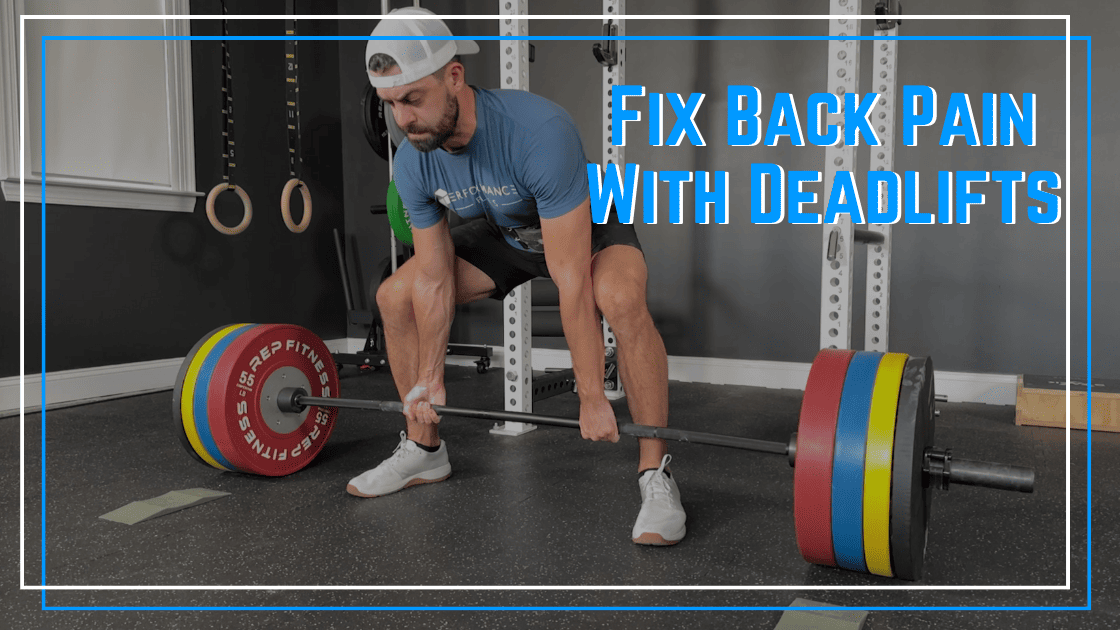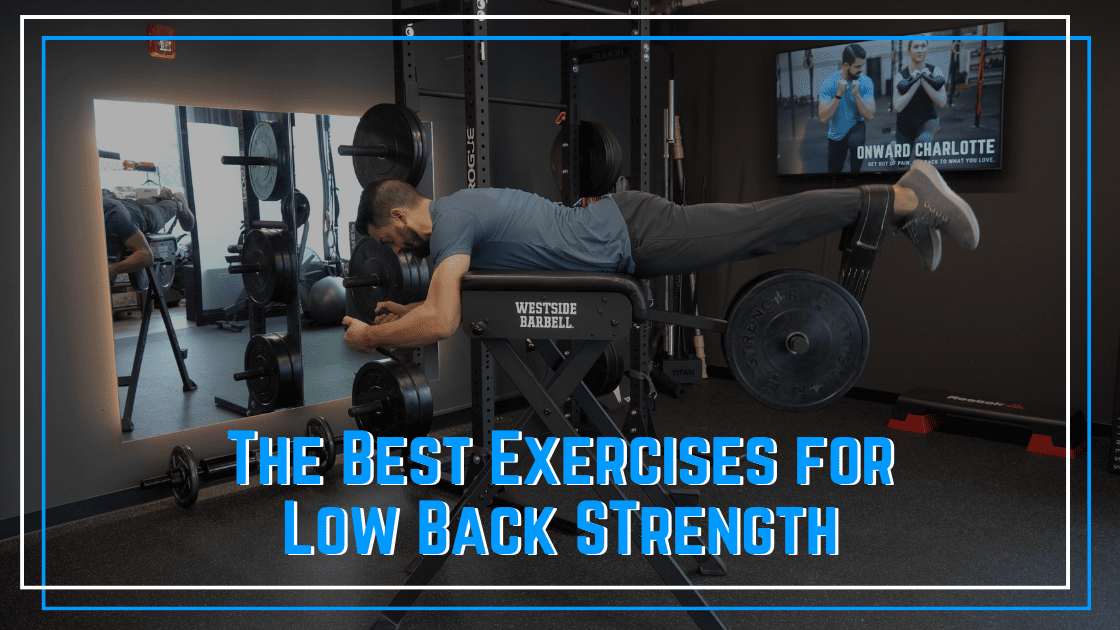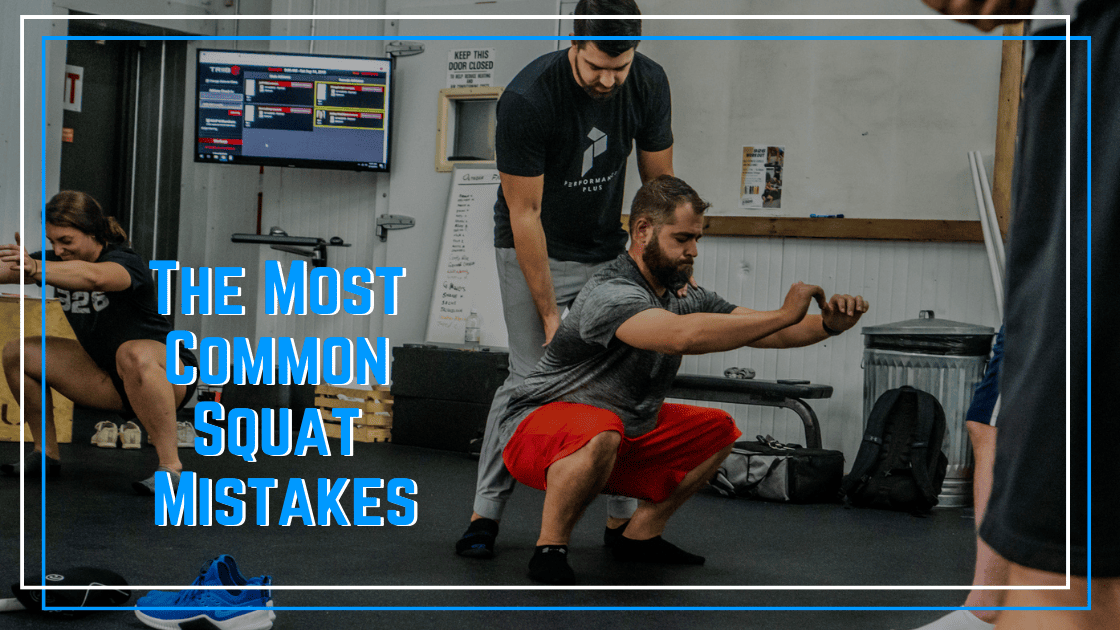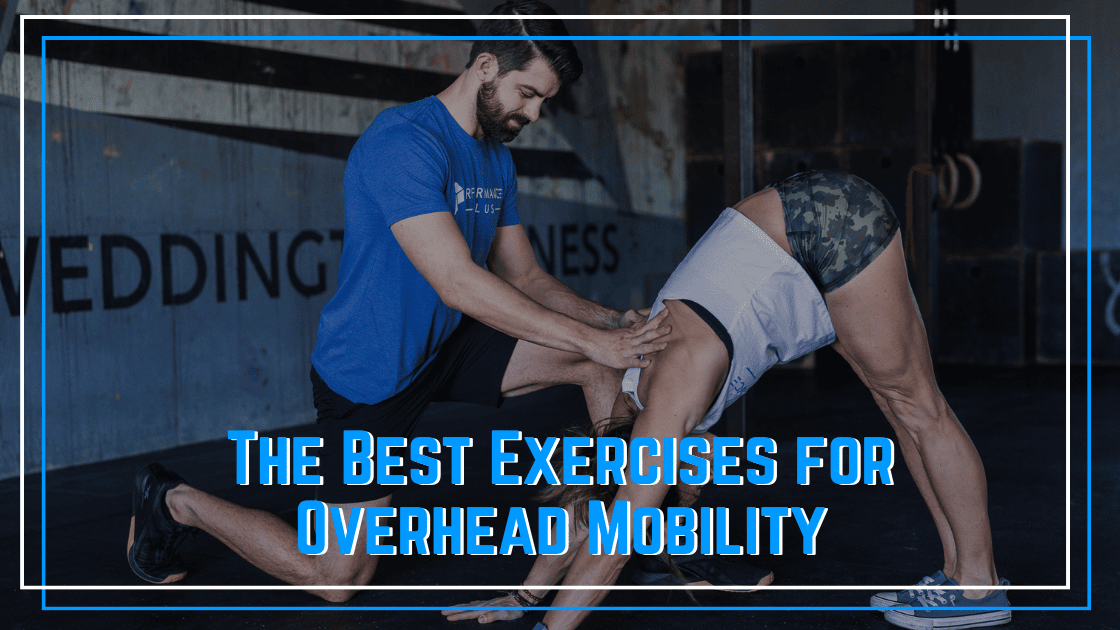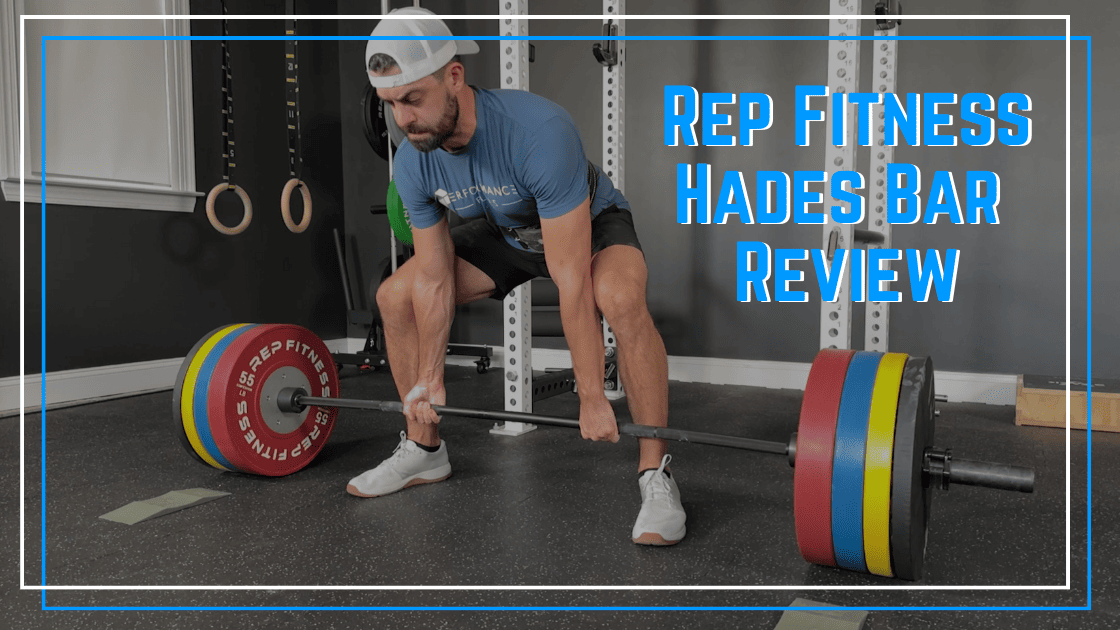The deadlift is one of the best exercises for improving whole-body strength. Hamstrings, glutes, spinal erectors, traps, and grip strength all in one! But for many athletes, every deadlift workout leaves them with an aching back or, worse, makes them avoid the movement altogether. This video will cover the most common technique issues to address if you are trying to fix back pain with deadlifts.
Fix Back Pain with Deadlifts
A number of different factors can contribute to back pain with deadlifts: training volume errors, poor recovery, technique issues, nerve tension, strength imbalances, and more. In this video, Doctor of Physical Therapy, Zach Long, breaks out the most common deadlift technique issues that contribute to back pain with deadlifts. If you want to fix back pain with deadlifts then make sure you aren’t making any of these deadlift mistakes!
Our Bulletproof Back Builder program is a great accessory plan for fitness athletes dealing with recurring back issues. It will build back strength up to help reduce strain and increase your strength.
Related Articles:
- Treating Back Pain with Deadlifts
- Returning to Deadlifts After Low Back Pain
- The Best Low Back Strength Exercises
- Strength Ratios
Fix Back Pain with Deadlifts Transcript
Spinal Bracing
The first reason why I see people struggle with deadlifts related low back pain is that they don’t know how to properly brace their spine.
So we wanna think of your spine as like a water bottle versus a soda can. A soda can is stiffer, it’s gonna be better able to tolerate having force applied to it. So, we wanna do the same with our abdominal cavity when we lift.
So when we brace our spine for heavy lifts, we actually wanna think about taking a big breath into our belly and then tightening our abs on top of that. That’s gonna be like carbonating a water bottle.
It’s gonna create more pressure inside your intra-abdominal cavity and that’s gonna let you better stiffen your spine to move maximal loads in the deadlift.
Take the Slack Out of the Bar
So the second most common thing I see contributing to deadlift-related low back pain is athletes who don’t understand how to pull the slack out of the bar.
So they’ll get set up and everything will be a little bit loose. You might see their elbows a little bit bent, but you certainly won’t see them taking a slow lift of the bar off the ground. Instead, they’ll just grip it and rip it off the ground as aggressively as they can.
What we have to understand is that the barbell has a little bit of wiggle in it. So if I take a bar and I pull it up a little bit, what you’ll find is between the collar and the shaft of the bar, there’s a little bit of jiggle there and most bars also have a little bit of bend or what we call whip to them.
And what we wanna do is slowly lift that bar off the ground versus jerking it off the ground. When you slowly apply pressure and remove all the slack out of the bar, this will result in the bar not jerking you out of position. If you get set up and you don’t pull the slack out of the bar and you start driving with your legs, then the bar is gonna pull you out of positioning. You’ll see a lot of movements like what Pamela just demonstrated there, leading to people struggling with low back pain during their deadlifts.
Engage Your Lats
The next common factor I see is individuals that don’t understand how important their lats are in the deadlift and it’s important in two different parts of the lift.
Number one is in your setup. So when you get set up in the deadlift, what I want you to notice is that Pamela pulls her shoulder blade down towards her back pocket. That little downward pull reduces how far the bar is away from her hip joint.
It puts her in a more mechanically efficient position when she focuses on that downward movement that happens from engaging your lap. When it gets closer to your hips, you’re going to be more efficient.
It’s also really important later in the lift. So when Pamela starts to deadlift, and the bar gets to her knees, if the bar drifts away from her body and stays out in front of her thighs, it’s almost like carrying your groceries into the house. But, carrying them far out in front of your body versus by your side. It’s a lot more work that way. If we really engage our lats, what you’re going to see is that that bar is going to slide up her thigh.
She’s going to keep it really close to her body where she’s more efficient in the lift, and that’s going to place significantly less stress on her low back.
Deadlift Leg Drive
Next thing is individuals that don’t get a good leg drive. So we typically think of the deadlift as like a low back, posterior chain exercise, but it’s important to note that the deadlift starts with a really strong quad drive off the ground. Those legs are thinking of pressing through the floor to initiate the deadlift.
Individuals that don’t get a good leg drive typically do one of two different things that both put a lot more force on the back. Number one is a stripper pull. So they’ll shoot their hips up and then deadlift. And essentially what you’re doing if you do a stripper pull where you shoot those hips up is you’re turning the deadlift into a straight leg deadlift and that’s going to be a lot more load on your low back. The second thing that we’ll see is some individuals will pull the bar off the ground, but they won’t press their legs through the ground and you’ll actually see, if you watch that one more time, you’ll notice that the bar actually goes out in front of Pamela. It moves away from her body at first and then it comes back towards it.
If the bar is moving away from your body, you are going to be less mechanically efficient and you’re going to see a lot more load on your low back.
Stiff Lumbar Flexion
Next thing, and I have to say that like stereotypically, like where I see this in my physical therapy practice is my 40 to 50 year old men and that’s the stiff low back trying to deadlift.
So what I like to look at is when somebody bends forward and reaches towards their toes, do they get flexion throughout their entire spine? So notice how Pamela’s low back rounds a little bit. I’ll see a lot of guys that as they flex, their upper back might round, but their low back stays completely locked in. into place, and so then when they go to deadlift even though they’re maintaining what looks like a neutral spine they’re at kind of their in range of their spine motion and the back just doesn’t like to have that much load on it at in range.
So some individuals with a really stiff low back would benefit from doing more catcalls, Jeffers and curls and exercises to open up a little bit of spinal flexion so that they can then deadlift in a true neutral versus neutral end range.
Low Back Strength
So the final piece of the equation here is an individual whose low back is just not strong enough. The deadlift does require a lot of low back strength. There are two kinds of ways that I might diagnose if somebody’s low back is just not strong enough.
Number one is I’m gonna look at this Beiring Sorensen hold here. So Pamela has her torso parallel to the ground while she’s on a GHD. Her hands are at her chest and if we find what’s called your ASIS is this little pointy bone on the front of your hips that’s almost just outside of your belly button usually a little bit lower than that.
That’s right on the edge of the pad here, and she’s gonna simply hold that plank position. I like to see my athletes who are deadlifting have enough low back lumbar spine endurance that it could hold this for about two minutes is I think a good metric. If you can’t hold it for two minutes and this is also a fantastic accessory exercise to do to build that low back strength up.
Strength Test 2
The second thing that I use is looking at somebody’s back squat versus deadlift. Most people are gonna deadlift more than their back squat and their back squats gonna be about 80 % of their maximum deadlift if your back squat is much closer to your deadlift like maybe you deadlift 400 pounds and you back squat 380 pounds far shy of 80 % or higher than 80%. Often those are individuals with more muscular legs relative to the back. I will say a caveat though is that a lot of individuals with different body proportions might be stronger based on their body proportions making that slightly less accurate of a test, but it can be a good starting point for some of you to identify if your low back just needs a little bit more strength. So there we have it. Six different things to look at if you struggle with deadlift-related low back pain.
We do have a great program if you follow into the category of somebody needing to build more low back strength, and that is our Bulletproof Back Builder at performanceplusprogramming .com. That is an accessory program built for individuals needing to strengthen and bulletproof their spine so that they have better lifts and less pain.
So check that out at performanceplusprogramming .com.

